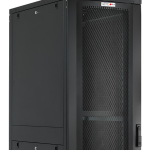20 Jan 11 reasons why the future belongs to fiber optic
11 Reasons Why the Future Belongs to Fiber Optic
“The future belongs to fiber optics!” This bold claim is backed by compelling reasons. Fiber optic technology is not just an upgrade—it’s a transformative infrastructure shaping how we connect, communicate, and consume information. Here are 11 reasons why fiber optics are essential for our future. 11 Reasons Why the Future Belongs to Fiber Optic.

1. Copper Technology Is Reaching Its Limits
Copper cables revolutionized communication decades ago, but they are nearing their technological limits. From modems with 56 kbps to DSL and VDSL reaching 50 Mbps, each leap required more complex upgrades. In contrast, fiber optics start where copper stops. With Fiber-to-the-Home (FTTH), speeds of 100 Mbps to 1 Gbps are achievable without distance being a limiting factor, ensuring scalability for future needs.
2. Fiber Optics Are the Backbone of the Internet
The global internet relies on fiber optics for high-speed data transmission. Modern infrastructures like the Transatlantic Telephone Cable 14 (TAT-14) boast bandwidths of 1,280 Gbps. With FTTH now reaching end-users, consumers can enjoy speeds of 100 Mbps, 500 Mbps, or even 1 Gbps—transforming how we work and live.
3. A Long-Term, Sustainable Investment
Building fiber optic infrastructure requires significant initial investment, but it’s a future-proof solution. Once installed, upgrades involve replacing equipment, not the cables themselves. Fiber optic networks can support increasing bandwidth demands for decades, making them a cost-effective choice for long-term connectivity.
4. Enabling Remote Work to Solve Traffic Problems
Traffic congestion is a major issue in urban areas, with millions of hours lost in transit. Expanding fiber optic networks can support remote work by providing reliable, high-speed internet. Governments and companies can further incentivize telecommuting, reducing environmental impacts and enhancing productivity.
5. The Natural Progression of Bandwidth Demand
Just as Moore’s Law predicts the exponential growth of processing power, Nielsen’s Law forecasts similar growth in internet bandwidth demand. Fiber optics meet this increasing need by enabling seamless upgrades to higher speeds, making it the logical next step in technological evolution.
6. Powering Video Conferencing and Reducing Travel
Advanced video conferencing has become a practical alternative to business travel. Companies save on costs, reduce their carbon footprints, and maintain productivity. These systems rely on fast, reliable connections provided by FTTH, making fiber optics indispensable for modern communication.
7. Streaming Services Require Bandwidth
Streaming platforms like Netflix, Amazon Prime, and Disney+ dominate entertainment. With resolutions advancing to 4K, 8K, and beyond, the bandwidth requirements are immense. Fiber optics ensure uninterrupted streaming, even for demanding applications like virtual reality (VR).
8. Fiber Optics Are Environmentally Friendly
Fiber optic technology is energy-efficient. Unlike copper networks, which require significant power for active components like distribution boxes, fiber optic networks have fewer active parts, reducing power consumption. This eco-friendly approach aligns with global sustainability goals.
9. Guaranteed Bandwidth Without “Up to” Limits
Copper and mobile networks often advertise “up to” speeds that fluctuate due to shared bandwidth or distance limitations. Fiber optics eliminate this uncertainty. With dedicated lines to each household, users receive guaranteed speeds as per their contracts, ensuring consistent performance.
10. High-Speed Internet Transforms Rural Living
Access to high-speed internet is becoming a key factor in real estate decisions. Properties in rural areas with inadequate connectivity face reduced demand. FTTH not only bridges this gap but also revitalizes rural communities by enabling remote work and digital accessibility.
11. Political Backing and Strategic Prioritization
Governments worldwide recognize the importance of fiber optics for economic growth. Policies increasingly favor fiber-first approaches to connectivity. For example, infrastructure goals often include statements like, “Fiber optics in every region and every home.” Public education and community initiatives play vital roles in accelerating this transition.
The Future of Connectivity
Fiber optic technology is more than just a replacement for aging copper networks—it’s a necessity for the digital age. From streaming to remote work, from sustainability to rural development, fiber optics provide the foundation for a connected future. Investing in this infrastructure today ensures we stay prepared for the demands of tomorrow.
- Many are not at all aware of the need for broadband expansion – and this applies both to private households and even more so to industry. Often the citizens can also see serious technical differences such as B. not differentiate between vectoring and FTTH and therefore not assess. Education plays a particularly important role in the private sector FTTH expansion . Voluntarily committed citizens’ initiatives are a key to success here , in order to convince fellow citizens of the sense of the fiber optic expansion. The 10-part article series “ Fiber Optic for you! ”Serves here as a practical guide to lead such projects to success – and this without public funding!
Construction Products Regulation (CPR) for Cables
CPR for cables (Construction Products Regulation) for cables became a legal requirement in July 2017. CPR for fiber optic cables is having an intended use for permanent installation in buildings and c...
10 October, 2019 Fiber Optic Cables No comment 0 Likes19″ Rack Cabinet
What is a 19” Free Standing Rack Cabinet? 19” free standing rack cabinets provide a robust, cost-effective enclosure solution. PDU mounting or connectivity on both the front and rear of the cabinet. T...
26 December, 2019 19" rack cabinet No comment 0 Likes5 Fan Facts About the Fiber Optic Cables
Fiber optic cables are a type of cable that use glass or plastic fibers to transmit data. Here are some interesting facts about fiber optic cables: Speed: Fiber optic cables are capable of transmittin...
01 June, 2019 Fiber Optic Cables No comment 4 LikesWhat is fiber optic cable
Fiber optic cables are an innovative communication medium that transmit data using light instead of electrical signals. Designed for efficiency and speed, these cables leverage thin strands of glass o...
09 January, 2020 Fiber Optic Cables No comment 4 LikesHow Much Does Fiber Optic Cable Installation Cost in 2025?
Fiber Optic Cable Installation Cost | Reduce Costs with Cable Blowing Machines – UPCOM How Much Does Fiber Optic Cable Installation Cost? Updated guide for telecom and infrastructure professionals (20...
22 October, 2019 Cable Blowing Machine No comment 4 Likes





